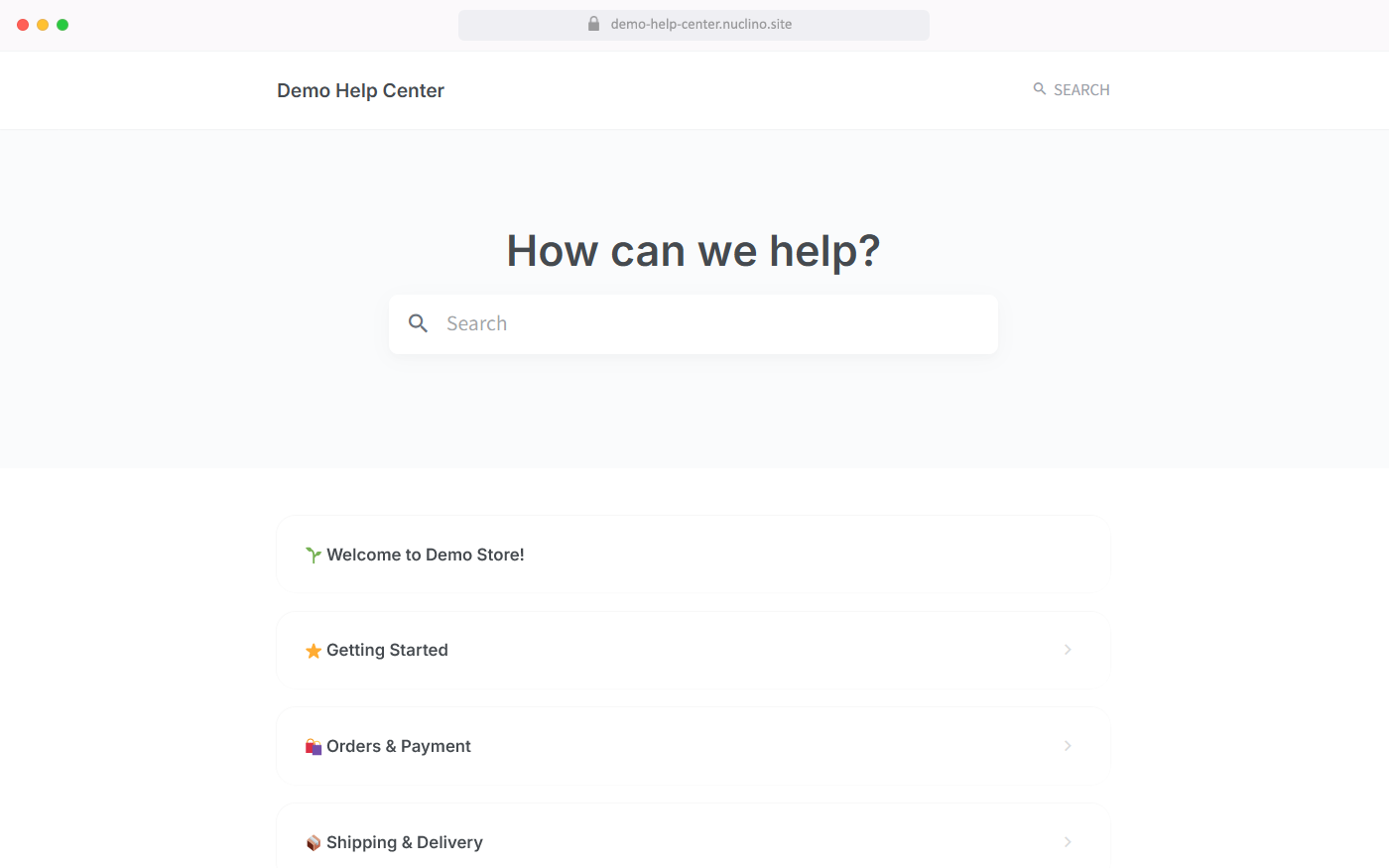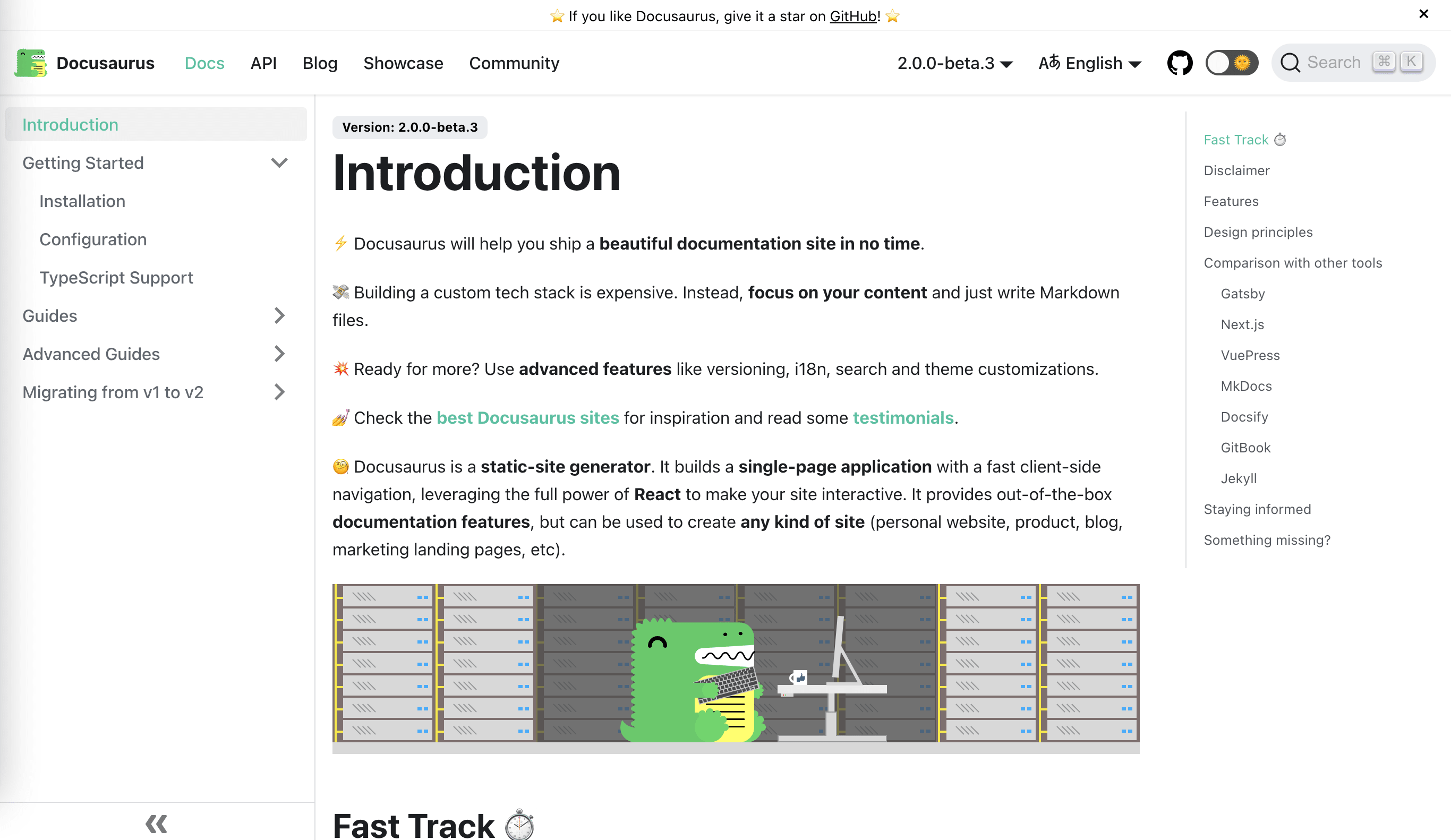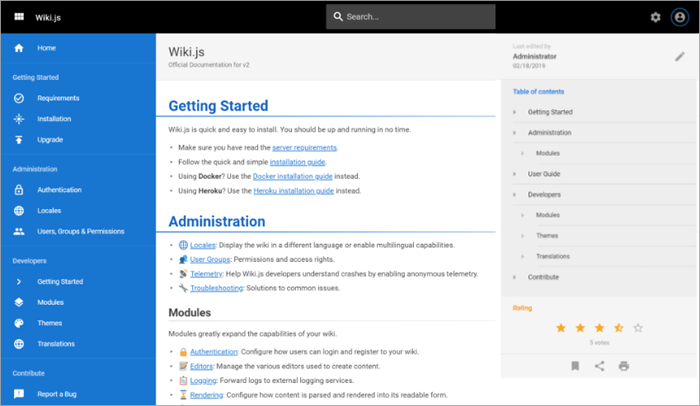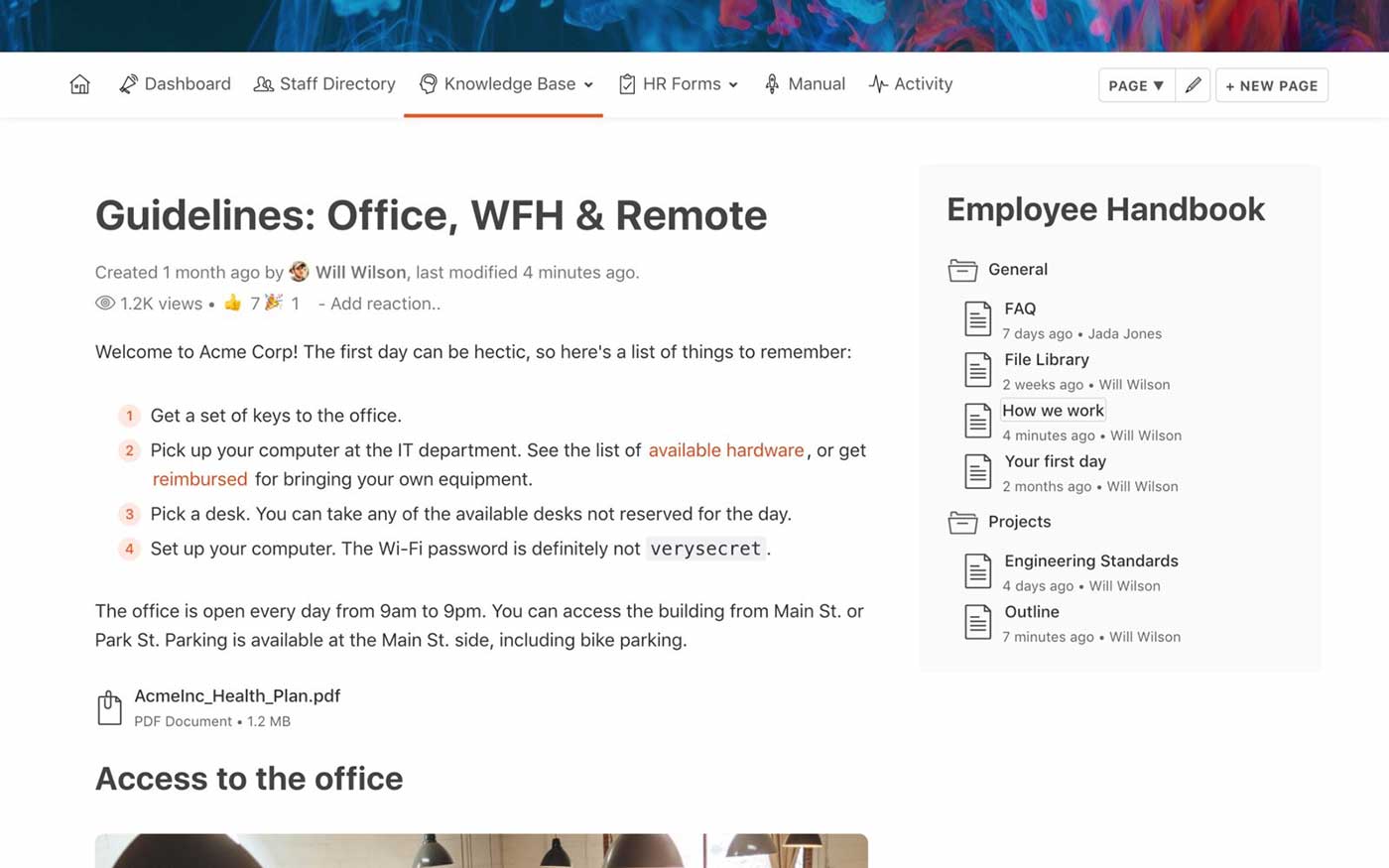Best Documentation Tools in 2025
Pick the right tool to keep your docs organized and up-to-date.
Let's be honest — documentation is no one's favorite task. Most do it sloppily just to cross it off their to-do list, while others neglect to document their work altogether. A common misconception about agile documentation is that writing docs is not only tedious, it's also a waste of time.
Author and expert on the psychology of programming Gerald Weinberg summed the general attitude towards documentation by calling it "the castor oil of programming" – in other words, managers think it's good for programmers, and programmers tend to hate it.
But documentation doesn't have to be such a pain. One of the first steps towards making it less frustrating is finding the right documentation tool.

What is documentation?
Documentation refers to any material that explains how something works or how to use it. This could be in the form of manuals, guides, or even simple notes. In the context of software, docs provide essential information for both users and developers.
For users, software documentation includes guides, tutorials, and help files that explain how to install, operate, and troubleshoot software.
For developers, it offers detailed references like API documentation, code comments, and system design documents, which are crucial for understanding the internal workings and integration points of the software.
Software documentation comes in many forms, such as:
User guides. These are detailed instructions that help end-users navigate and utilize software applications. These guides often include step-by-step procedures, screenshots, and troubleshooting tips.
API docs. These are comprehensive manuals that describe how to use APIs. They typically include endpoint descriptions, parameter details, example requests and responses, and authentication methods.
Developer guides. These are technical documents aimed at developers, explaining the architecture, design patterns, and implementation details of software. These guides might include code snippets, best practices, and integration instructions.
Installation manuals. These include instructions on how to install and configure software, often including prerequisites, system requirements, and configuration steps.
Release notes. These are the documents that provide information about new features, bug fixes, and enhancements in software updates. Release notes keep users and developers informed about what has changed in a new version of the software.
Top 10 best documentation tools
If you have to deal with a clunky and slow editor, unreliable search, and an unintuitive interface every time you have to write or update a document, it's no surprise that documentation will be a source of endless frustration.
But a good documentation system can go a long way towards changing your attitude towards writing the docs. To make your decision easier, we have evaluated dozens of online documentation tools and put together a list of the 10 best picks.
1. Nuclino

Nuclino is a unified workspace where teams can organize all their knowledge, docs, and projects — like a collective brain. It's a great solution for lightweight technical documentation, but it's not all it can do.
Nuclino offers a variety of ways to structure and visualize your documents, including a nested list, a Kanban board, a table, and a mindmap-style graph, allowing you to collaborate on projects, plan your sprints, communicate asynchronously, and more. You can essentially consolidate all your work in one tool, minimizing unnecessary context-switching.

You can also turn any Nuclino workspace into a public website, accessible to anyone on the web and discoverable via search engines. It's perfect for help centers, user documentation, changelogs, and much more.

Nuclino is designed to eliminate as much friction from the writing process as possible. Its clean, intuitive interface makes it a great solution for both, technical and non-technical users. The editor supports a set of Markdown commands that allow you to quickly format your docs without taking your hands off the keyboard. Organizing your documentation is just as easy with wiki-style internal links, which allow you to link related documents together.

Every Nuclino page can be collaboratively edited in real time without edit-save-conflict cycles, and every edit is preserved in the version history. The instant search function allows you to locate the docs you need in seconds.
Nuclino also offers built-in visual collaboration and allows you to add an infinite collaborative canvas to any document. You can use it to create diagrams and flowcharts, run visual retrospectives, brainstorm ideas using sticky notes, and much more.

If you want to create clean, consistent documentation and value ease of use and speed, look no further than Nuclino.
What users say about Nuclino:
"I had never used a product like Nuclino until joining my current startup, and I've been really impressed with it. It's super easy to use and edit and it looks clean. It's been an essential tool for me as I've built out all of the documentation for my department. Some of my favorite features are the ability to pin articles and the ability to include boxes of code (and you can specify the language - there are a bunch to choose from, although I've only used SQL)."
2. Document360

Document360 is a hybrid solution that can bring together your internal and customer-facing documentation.
Notable features of Document360 include built-in localization mechanisms, content review reminders, SEO features, comments, and more. Granular analytics allow you to track how the readers interact with your docs.
Despite its extensive feature set, it's a relatively easy-to-use tool. Documentation writers can choose between a Markdown editor and visual WYSIWYG tools, tailoring the editing experience according to their preference.
Looking for more tools similar to Document360? Check out this list of Document360 alternatives.
What users say about Document360:
"Document360 was exactly what we needed to publish documentation to various reader groups. It's quite straightforward and quick to grasp on one hand, while feature-rich on the other."
3. Confluence

Atlassian Confluence is one of the oldest software documentation tools on the market. Its powerful enterprise capabilities and extensive configuration options helped it amass over 60,000 customers.
Its strength lies in its seamless integration with other products in the Atlassian suite. If you are already using other Atlassian tools, such as Jira or Bitbucket, Confluence is likely to easily fit into your workflow.
It comes with a certain learning curve, but if you are looking for a documentation tool with advanced customization options and enterprise-level features, Confluence is definitely an option worth considering.
Looking for more tools similar to Confluence? Check out this list of Confluence alternatives.
What users say about Confluence:
"After using this software for more than 18 months, I can definitely say, this is a great tool for technical documentation. It provides easy setup, multiple project spaces for different teams, amazing APIs to create pages remotely from different tools, and last but not the least, simultaneous editing of the same document."
4. BookStack

BookStack is another wiki-style documentation tool for developers. It's open-source, self-hosted, and highly flexible.
While the interface and navigation are fairly user-friendly, note that the initial installation may require some patience and technical skills. Once your documentation platform is up and running, however, it should be easy to bring your team on board.
If you would prefer a self-hosted documentation system rather than a cloud-based one, BookStack is definitely worth evaluating.
Looking for more tools similar to BookStack? Check out this list of BookStack alternatives.
What users say about BookStack:
"The stock interface design has a modern feel and is simple for new users to use. Granular permissions can be set up for specific roles on a per-content basis and permissions will waterfall down to child content. However, the current installation process involves many steps and may be a lot to take in for people not familiar with setting up Laravel applications."
— (Slant review)
5. GitBook

GitBook is an all-in-one platform that can work as your internal documentation tool, a knowledge base solution for your customers, and your personal note-taking app. It's a great option if you are looking to consolidate all your documentation — both internal and external — in one place.
This modern software documentation tool lacks certain collaboration features that other options on this list offer, such as real-time collaborative editing, but it makes up for it in other areas. GitBook stands out thanks to its seamless integration with GitHub, visual customization options, advanced version management, and more.
Looking for more tools similar to GitBook? Check out this list of GitBook alternatives.
What users say about GitBook:
"Before GitBook our documentation was limited and very hard to find. It is really easy to get started with and the best part is that it supports Markdown. Writing documentation in Markdown is way easier and GitBook makes it easy to organize the content. There are no cons as such, but there were a few issues while getting started, while importing the existing documentation for the first time."
— (Capterra review)
6. Docusaurus

Pricing: Free, open-source
Rating on Capterra: No rating yet
Docusaurus is an open-source technical documentation tool built by Facebook, designed to help you create and maintain websites for documentation easily. It’s particularly popular among developers because it’s built on React, supports Markdown, and provides a robust platform for managing technical documentation.
Docusaurus comes with a highly customizable default theme and allows you to tailor the look and feel to match your branding.
One of the notable features of Docusaurus is its ability to support multiple versions of your documentation, which is especially useful for software projects that have different versions in production.
It also has built-in search functionality powered by Algolia, making it easy for users to find the information they need quickly.
What users say about Docusaurus:
"The best way to build documentation today. Easy to use, extensible, strong community support in case of problems. As it's open-source, you can still contribute if you want a new feature or need a bugfix."
7. GitHub Wiki

Pricing: Free, advanced features starting from $4/user/month
Rating on Capterra: 4.2/5
GitHub Wiki is a feature of GitHub repositories that allows developers to create and manage documentation directly alongside their code. It's designed to provide a simple and integrated way to document projects, making it easy to keep documentation in sync with the codebase.
Each GitHub repository automatically comes with its own wiki, where you can create pages using Markdown or other lightweight markup languages.
One of the strengths of GitHub Wiki is its tight integration with GitHub's version control system. This means that code documentation changes can be tracked, reviewed, and rolled back just like code changes. This makes it particularly useful for projects that are already hosted on GitHub, providing a seamless documentation solution without the need for additional tools or platforms.
What users say about GitHub Wiki:
"GitHub checks all the boxes for a basic version controlling platform, but it has so much more available. It has tons of great integrations to run tests against code, as well as plenty of ways to create internal documentation similar to a wiki article."
8. Read The Docs

Pricing: Free, open-source
Rating on Capterra: 5/5
Read The Docs is an open-source documentation builder designed for hosting, building, and versioning documentation, commonly used for technical and software documentation. It automates the process of building and deploying documentation, which is particularly useful for projects with frequent updates.
Documentation is written in reStructuredText or Markdown, and built using Sphinx, making it straightforward for developers to create and maintain comprehensive documentation.
Read The Docs also supports multiple versions of documentation, which is particularly beneficial for projects that undergo frequent updates and have multiple release stages.
What users say about Read The Docs:
"The best part is using your existing development workflow to maintain and deploy your documentation. The whole idea is that you can manage your documentation just like you maintain the code. Their build and hosting make it simple to just add docs and get them online. And since the docs are versioned you can provide relevant documentation for each version of your software."
9. Wiki.js

Pricing: Free, open-source
Rating on Capterra: No rating yet
Wiki.js is a free open-source documentation tool that runs on Node.js and offers a modern interface for creating and managing documentation. It's designed to be highly flexible and configurable, supporting multiple database backends like PostgreSQL, MySQL, and SQLite.
Wiki.js uses Markdown for content creation, which is convenient for users familiar with this lightweight markup language.
You can optionally extend the functionality of Wiki.js through plugins. This makes it adaptable to various documentation requirements and workflows, whether you’re documenting internal processes or public-facing projects.
What users say about Wiki.js:
"A powerful documentation tool. One thing that I like most about Wiki.js is that it is open-source. Anyone can easily install and use it. It has an easy-to-use and clean user interface which enhances the user experience. Since this tool is built on NodeJs, it provides high-speed performance. It has different authentication and administrative functions, which can be easily managed. This helps to maintain all documents whether it be public or private."
10. Papyrs

Pricing: Free, advanced features starting from $89/month
Rating on Capterra: 5/5
Papyrs is a documentation tool designed for creating intranet sites and internal wikis. It's a cloud-based platform that focuses on making it easy for non-technical users to create and manage documentation through a user-friendly, drag-and-drop interface. This makes it accessible to a wide range of users within an organization, from HR and management to technical teams.
The pricing starts at $89 per month for the Team Wiki plan, which includes up to 20 users.
What users say about Papyrs:
"We have an intranet, employee roster, org chart, and process documents all in one place. Every team member owns their page and documentation."
Find the best documentation tool for your team
This is by no means an exhaustive list of documentation tools. There are plenty of other solutions, many of which are (quite honestly) almost identical copies of each other.
It's also important to keep in mind that finding the right tool is only half the battle. The real challenge is to build a culture of documentation and develop the right habits. A user-friendly documentation tool, however, can make that task a lot easier. We hope this list helps you make the right choice for your team.
Software documentation tools FAQs
What are the types of documentation tools?
There are various types of documentation tools available, each suited to different needs and purposes:
Markdown editors are simple documentation tools for writing and formatting text using Markdown, a lightweight markup language. Markdown editors are ideal for creating straightforward text documents with basic formatting.
Documentation platforms are comprehensive solutions that offer features for creating, managing, and publishing documentation. These platforms often include version control, collaboration tools, and the ability to organize content in a hierarchical structure.
Wiki software tools like MediaWiki allow for collaborative creation and editing of documentation. Wiki tools are great for creating a central knowledge base where multiple users can contribute and edit content.
API documentation tools are specialized platforms designed to create and manage API documentation. They provide features for generating interactive API docs directly from the code, making it easier for developers to understand and use APIs.
Why use documentation tools?
Good documentation tools help you create clear and easily searchable docs. This is crucial for several reasons:
User assistance: It helps users understand how to install, use, and troubleshoot software. Without it, users might struggle to use the software effectively.
Developer reference: It serves as a reference for developers, detailing how the software was built, how it should be maintained, and how new features can be integrated.
Team coordination: For teams, documentation ensures everyone is on the same page, following the same protocols and understanding the same systems.
Future-proofing: Good documentation helps maintain and update software in the future, making it easier to onboard new developers and keep the software up-to-date.
How to choose the best documentation tool?
Choosing the right documentation tool can make a huge difference in how easy it is to create, manage, and use your documentation.
First off, figure out who will be using the documentation. Is it for your customers, your development team, or just internal use? Different audiences need different kinds of documentation.
Next, evaluate the feature sets. Here are some key features to look for:
Ease of use: The documentation tool should be simple to use. If it’s too complicated, you’ll waste time figuring it out instead of actually documenting.
Clear and efficient formatting: You need flexible formatting options to make your docs look good and professional.
Fast and reliable search: A good search feature is crucial so users can quickly find what they’re looking for.
Integrations: The tool should play well with other tools you’re already using, like project management software or code repositories.
Collaboration: If your team is working on the docs together, you need features like real-time editing, comments, and version history.
Scalability: The tool should be able to grow with you as your project or team expands.
Ready to get started?
